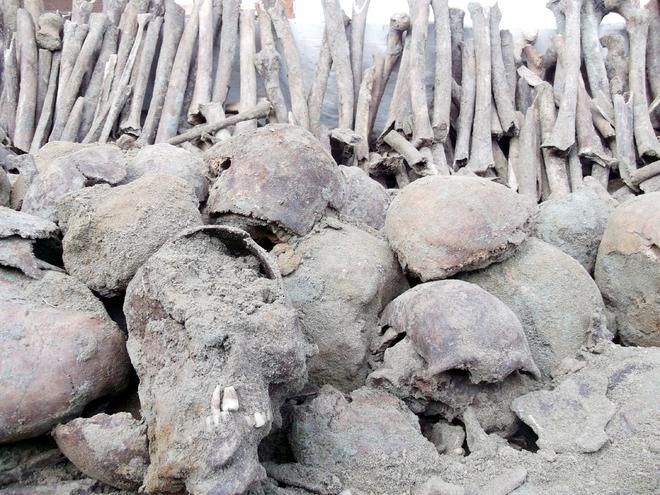Gyaneshwer Chaubey was surprised when he received a text message in June this year from a man in Canada requesting a conversation about the Ajnala massacre. Mr. Chaubey, who works in the department of zoology in Banaras Hindu University (BHU), wasn’t expecting to have a chat about an event that had transpired in August 1857, with a non-academician. But Sameer Pandey had called him to say that one or more of the soldiers from the 26th Native Bengal Infantry Regiment who had been killed en masse in India’s first war of independence, was an ancestor.
Prof. Chaubey is in the process of analysing the remains of the 282 men whose bones had been found in February 2014 in an old well in Ajnala, near Amritsar, Punjab. Certain markers had enabled scientists to conclude that the men were from the Gangetic plains.

“When we spoke, what really got me interested was the revelation that after the British killed many of the soldiers, they harassed the families, forcing these people to flee to Tamil Nadu,” said Mr. Chaubey, who is now in the process of locating the descendants.
In 2014, Surinder Kocchar, an amateur historian, found a well beneath a gurdwara in Ajnala, where the skeletons of 282 soldiers were found along with bullets, epaulettes, and coins of the East India Company. They had been shot at during their revolt. “The book Crisis in Punjab by Frederick Cooper, the then deputy commissioner of Amritsar, gave details, taking us to the site after 157 years,” said Mr. Kocchar, who has written 17 books on undivided Punjab, pitching for serious efforts to trace families. The only known soldier killed in Ajnala was named Prakash Pandey.
Mr. Sameer Pandey, an engineer who immigrated to Toronto, Canada, in 2003, said, “My ancestors and other people fled from Dumtahar, Rae Bareli, after 1857, to a village called Santhur in Krishnagiri in Tamil Nadu and settled there. I request the U.P. and Tamil Nadu governments to share some information of the land and people records of the village in Krishnagiri and Dumtahar village in Rae Bareli, so migration data can be matched.” He hopes DNA samples from the bones collected could also be a source of proof.
“We have mitochondrial DNA data of 50 martyrs. The next plan is to generate nuclear data, which is more informative than mitochondrial DNA. Also, this is a case of six generations and a single soldier may have multiple descendants, so it is easier to find a few with mass DNA testing, but it is expensive and time consuming,” said Mr. Chaubey, adding that despite the fact there are only 50 samples to match with out of 282, they were hopeful.
Mr. Chaubey says he has written to the authorities in Tamil Nadu and the Union Government to trace descendants of those who migrated in 1857, “but I failed to get any response”. In addition, Mr. Kochhar has tried the United Kingdom government. “They said that as the East India Company was in command and control in 1857, they have no records of the 26th Native Bengal Infantry.” However, he is not convinced by their response.







